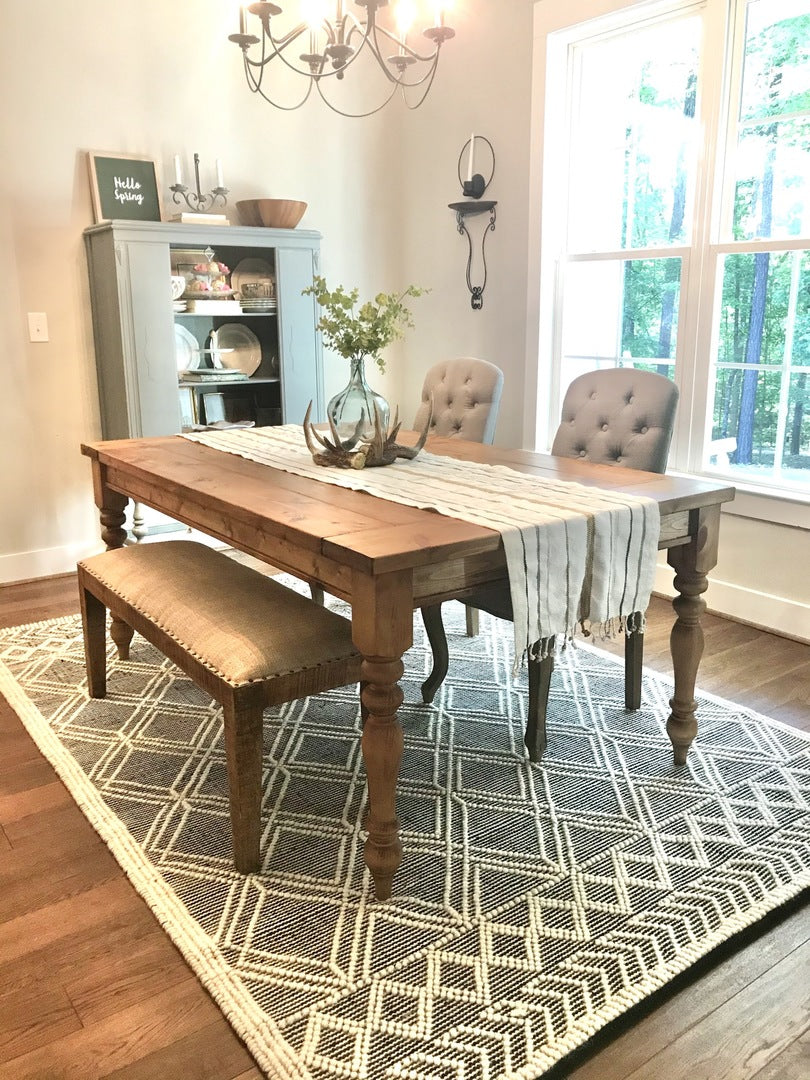A Thorough Check Out Table Leg Styles: Finding the Ideal Suit
Choosing the best dining table leg design is important for both aesthetic appeal and sensible performance. Conventional four legs supply ageless style and stability, while the pedestal base gives raised legroom and a modern-day look. For those with bigger tables, trestle legs guarantee tough assistance, whereas barrette legs introduce a mid-century modern-day vibe with their minimal design. The x-shaped legs mix modern design with enhanced security. Each of these options brings one-of-a-kind advantages, making the option greater than simply a matter of choice. Check out further to find which style completely complements your eating space and way of life.
Typical Four Legs
Amongst the different types of dining table leg styles, the traditional four-leg design continues to be a classic selection for lots of families. 4 legs provide balanced assistance, making certain the table remains secure and qualified of bearing considerable weight (dining room table legs).
From an aesthetic perspective, the typical four-leg layout can be quickly adapted to various indoor designs. Whether crafted from wood, metal, or a mix of materials, these legs can be intricately sculpted, streamlined and minimalistic, or anything in between. Their adaptability allows them to complement both rustic and modern settings seamlessly.
In addition, the uncomplicated structure of the four-leg design promotes simplicity of movement and positioning within a space. Unlike even more complicated bases, this style decreases obstructions, providing enough legroom for restaurants. In summary, the typical four-leg dining table leg style weds enduring style with useful capability, making it an astute choice for those seeking both form and function in their eating furniture.
Stand Base
Commonly commemorated for its elegant and space-efficient style, the stand base is a notable alternative to the conventional four-leg setup in eating table leg designs. Without edge legs, restaurants are afforded greater flexibility of motion, making it an ideal choice for round and oval tables that promote more intimate and comprehensive celebrations.
The central column itself supplies a canvas for complex styles and artistic expressions, including an aspect of visual passion below the table. In summary, the stand base combines capability with design, making it a refined and sensible choice for diverse eating environments.
Trestle Legs
Trestle legs give a robust and timeless structure for dining tables, defined by their horizontal cross-bracing and strong support light beams. Originating from middle ages times, this style has actually developed yet retained its necessary structure, making it a seasonal favorite in both standard and contemporary setups. The main trestle beam of light, often supported by 2 or more important source upright posts, uses remarkable security, permitting larger table lengths without the requirement for added legs.
A substantial advantage of trestle leg tables is the adequate legroom they use. Unlike tables with four corner legs, the lack of blockages at the table's edges supplies unblocked space for chairs and restaurants, boosting comfort and availability. This makes trestle tables ideal for fitting bigger gatherings, whether in a dining-room or a reception hall.
From rustic farmhouse to sleek contemporary styles, trestle legs can be personalized to fit private preferences. Their long-lasting charm and practical advantages make trestle legs an engaging option for those looking for both style and functionality in their dining table.
Hairpin Legs

The charm of barrette legs depends on their simplicity and convenience - dining room table legs. Available in a variety of products, including steel and brass, they can be completed in countless colors to match various indoor styles. Whether matched with a rustic wood table top or a contemporary glass surface, hairpin legs easily blend functionality with a touch of classic appeal
Toughness is an additional notable attribute of barrette legs. In spite of their delicate appearance, these legs are crafted to bear considerable weight, making certain the dining table continues to be secure and protected. In addition, they are relatively very easy to set up, making them a preferred selection for DIY fanatics and expert furnishings makers alike.
X-Shaped Legs

Built from products such as steel, timber, or a mix of both, X-shaped legs can be tailored to match different style choices. Steel legs typically offer a sleek and commercial feeling, perfect for loft-style houses and contemporary dining rooms. On the other hand, wood X-shaped legs use a warmer, much more rustic allure, ideal for farmhouse or eclectic insides. The flexibility in materials enables property owners to customize their table to click to find out more much better fit their overall design scheme.
In addition, the engineering behind X-shaped legs ensures even weight circulation, lessening the threat of tottering and improving resilience. This makes them especially well-suited for bigger eating tables that require extra assistance. In essence, X-shaped legs mix practical engineering with modern aesthetic appeals, making them an ageless option for varied dining atmospheres.
Final Thought
A detailed understanding of table leg styles reveals the distinct characteristics and benefits of each layout. Traditional 4 legs supply security and ageless charm, while pedestal bases provide legroom and a structured look. Trestle legs make sure robust support for bigger tables, and barrette legs introduce a mid-century modern over at this website aesthetic. X-shaped legs incorporate modern style with enhanced security. Choosing the suitable leg style ensures both useful and visual complete satisfaction in any eating area.